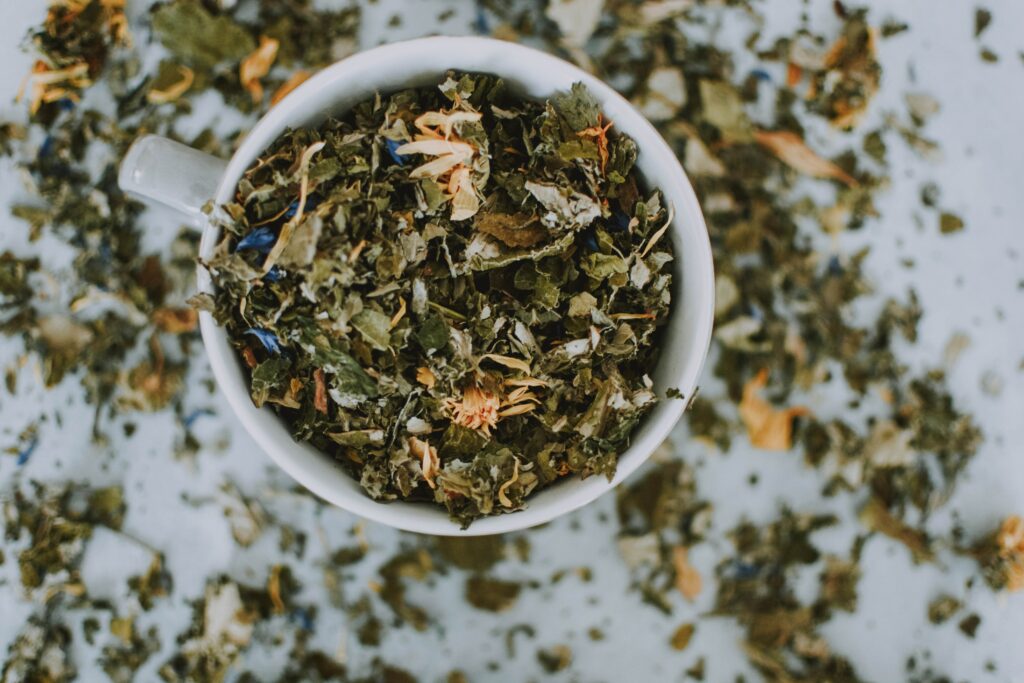How to Manage Vaginal and Pelvic Health

How to Manage Vaginal and Pelvic Health
No matter if you are planning to go the family way or navigating the postpartum stage, managing your pelvic and vaginal health is imperative for your health as well as that of your baby. During pregnancy, both the pelvic floor and muscles stretch to provide enough room for the growing foetus. Now, with time these muscles may get weak and fail to return to their optimal location.
Similarly, intimate or vaginal health management is an essential part of women’s overall health, especially, before, after and during pregnancy. Though this is not discussed often, it’s important for avoiding infections and strengthening the vaginal muscles. During pregnancy, hormonal changes along with improved blood flow cause a higher vaginal discharge. Though such discharges are harmless, if it is foul-smelling, you must talk to a doctor. This is especially because in this period, the vagina also acts as a passage for infection.
Understanding the Feminine Ground
A woman’s body needs more care. However, to receive that, the individual must consider understanding the language of her own body. In this article, you will learn how to manage the pelvic floor and alleviate tension patterns so that you can slow down energy loss.
Looking for an effective way to improve energy flow in your core? Today, most women have tension in their pelvis and vagina due to lifestyle changes that affect the energy flow in the body. Knowing the art of paying attention to the pelvic and vaginal patterns is a great way to improve the energy level. So, when preparing for pregnancy or childbirth, it’s crucial to take care of your roots for a healthy body and mind. Pelvic exercises and vaginal massage are some of the tools that you can incorporate into your life to take care of your body.
To understand the relation between the vagina and the energy flow in a woman’s body, let’s go through a few examples. For instance, if a woman is anxious or angry, her vagina gets hot. During pregnancy, the pelvic bowl energy becomes bright. On the other hand, when she is afraid, sad or stressed out, the vagina and pelvis signal a message to let down her guard.
Taking Care of Pelvis and Vagina
The way a woman moves in the world, interacts with others and maintains a posture indicates her personality and experience. From her personality to the posture she carries, everything is defined by the tension pattern in her pelvic and vaginal muscles. These patterns not only reflect her experience but also affect her overall health.
The root of the female body can be defined as her physical ground where she starts understanding her relationship with her feminine being. This means that by focusing on the structure of her pelvic bowl and muscles, she can explore her embodied femininity and understand how her body interacts with the entire world. Gradually she understands where she feels comfortable and where she becomes restricted. Mapping the pelvis and vagina while visualising their anatomy is a great way to discover the physical and energetic pattern of these organs.
-
Yoni Massage
Yoni massage, also known as Yoni mapping is an effective way to improve your body awareness and understand what feels good to you. It is a sensual massage that helps you feel more comfortable underneath your own skin. However, this therapy is nothing to do with foreplay or sex.
Yoni is a Sanskrit word that refers to the vagina. In Sanskrit, it means a sacred space. Thus, a Yoni massage is an approach in which the vagina is treated with honour and respect. This massage is one of the tantric practices that needs to be practised in tantric positions. With this therapy, you can explore your body slowly and methodically. It is believed that Yoni massage can help a woman work through sexual trauma. With it, you earn more control over your sexuality and learn what you enjoy. Some proponents also believe that this sensual massage may enhance the relationship with the partner.
Apart from improving your body awareness, a Yoni massage enhances oxygen and blood circulation in your vagina. It is also great for improving your vagina’s natural lubrication. For women undergoing trauma or emotional blocks, this therapy can effectively release tension and heal the pain. Also, it is a great approach for dealing with vaginal or pelvic floor muscle tension. When done correctly, it reduces unwanted muscle tightness, spasms and stagnation.
When it comes to enhancing pelvic organ alignment and balance, Yoni massage or mapping can help you effectively. By supporting muscle engagement and balance, this sensual massage technique supports your fertility journey. So, while preparing your body for pregnancy and childbirth, consider practising this therapy for relaxation and creating space for the foetus. It is also a great technique to prepare your pelvis muscles for birth. This physical therapy also has many postnatal benefits. After childbirth, the pelvis and vaginal muscles act differently. This physical therapy helps women regain connection with their vagina and pelvis after childbirth. Yoni massage or mapping also encourages physical and emotional healing after a difficult childbirth.
-
Yoni Steaming
Vaginal steaming or Yoni steaming is a method of cleansing the vagina using steam. It is an effective way to enhance your genital health. Between sexual intercourse, menstruation and pregnancy, a woman’s genital organs withstand a lot. Additionally, issues like pelvic muscle damage or hormonal changes can make the vaginal area uncomfortable.
But there is a great solution to this. Vaginal steaming is an excellent remedy to cleanse your vagina for avoiding infection, relaxing pelvic muscles, easing menstruation cramps and bloating, etc. It involves sitting over a pot of steaming water that may contain herbs like chamomile, basil, calendula, etc. Apart from cleaning your genital organs, the therapy can help you deal with infections, cramps, hormonal imbalances, muscular tensions, and so on.
Although Yoni steaming is relaxing, it must not be used to treat medical conditions. Also, pregnant women should not practise such therapies as it could adversely impact the foetus. It is always advisable to consult a medical professional before taking such therapies. Take Yoni steaming before pregnancy and at least after 6 weeks in postpartum after consulting with your medical practitioner.
To make Yoni steaming effective and risk-free, ensure that you use the right herbs and kits. For example, normal bowls are not perfect for steaming your vagina. It’s better to use a Yoni-shaped steam bowl to make the process comfortable and effective. Also, to practice such rituals, you need a perfect base to sit on. You can sit on a Yoni stool to complete the ritual with ease. You may find such exciting Yoni Care products at the La Loba store. The store also has a wide variety of Yoni steaming herbs that allow you to reconnect with your body and keep your vagina healthy. All the ingredients available at this store are 100% organic and have healing properties.
-
Pelvic Bowl Exercises
The pelvic floor makes a powerful base of support. So, to build a strong connection with your body and keep your genital parts healthy, it’s important to incorporate pelvic bowl exercises in your daily self-care rituals. Taking care of this part of your body not only enhances its capacity to bear tensions and pregnancy but also supports you physically, emotionally, and spiritually. Pelvic bowl exercises are great for bringing body awareness and pondering your connection with your feminine core.
These exercises can help:
- Improve control of your bowel and bladder
- Reduce a bulge, heaviness, or discomfort in the vagina
- Lower the chance of prolapse
- Promote recovery after childbirth or any gynecological surgery
- Improve orgasmic potential
- Increase body awareness
- Improve body posture and social confidence
- Enhance the quality of life
However, to make the most out of these exercises, consider locating and visualising the landmarks of your pelvis. Sit in a quiet place and use your hands to locate your pelvic bowl, crest pubic bone, and so on. Also, try to locate the area where the two halves of your pelvis meet and closing your eyes, try to visualise the connection with the sacrum, coccyx, and other parts. This will help you to understand the vibrant energy of your creative centre.
Visualising the shape of your pelvic bowl and locating the spaciousness within your bowl helps improve your inner body awareness. Tracing the boundaries of your pelvis not only helps you to sense the physical shape of your pelvic bowl but also your own feminine potential. Sensing the centre of your pelvic floor along with the uterus and ovaries helps you to feel the denser energy and internal creative flow.
Apart from the uterus and ovaries, sensing your vagina helps you to improve your orgasmic potential and fertility cycle, thereby easing your childbirth process. While locating and visualising your creative centre, note how you feel. This will help you to acknowledge the parts that need healing and celebration.
While exploring your pelvic bowl and genital parts, jot down your experience on a piece of paper. Write down about your pain and the areas that need healing. You may also note down your own desires regarding your connection with the feminine core. Acknowledging your celebration is important for leading a joyful and healthy life.

Yoga Poses and Mindfulness Practices For Improving Pelvic & Vaginal Health
Pelvic and vaginal discomfort can make you feel physically and emotionally drained. It not only impacts the quality of your health but also your lifestyle. Basically, a healthy pelvis and vagina are critical to a woman’s overall well-being. Apart from leading an organised lifestyle and incorporating healthy habits, improving body awareness and incorporating Yoga stretches can improve your pelvic and vaginal health. So, to take care of your vaginal health, consider incorporating Yoga poses and mindfulness practices into your daily routine.
Yoga is a great way to improve your body strength, balance, alignment, flexibility and awareness. Including certain Yoga poses and mindfulness techniques can also strengthen your pelvic muscles and protect genital organs from tension and injury. Here are some of the Yoga poses and mindfulness practices that can effectively promote your pelvic and vaginal health.
1-Prasarita Padottanasana OR Wide-Legged Standing Forward Bend
Whether it’s about keeping your vaginal muscles toned or preparing for childbirth, Prasarita Padottanasana is an amazing Yoga pose for maintaining optimal vaginal health. To practise this pose, stand straight, keeping your feet wide apart so that they are parallel to each other. Ensure that your toes are pointing inward. Now, bend forward while exhaling and keep your knees straight and palms beside your shoulders. Gradually drop down your head so that it touches the ground. While bending, make sure that your back is straight. To make this exercise effective, hold onto this position for at least 30 seconds and repeat the pose thrice.
2- Baddha Konasana OR Butterfly Pose
Looking for an effective exercise to strengthen your pelvic muscles? Titliasana or Butterfly pose is an effective exercise to improve your pelvic and vaginal health. Sit on a mat and fold your legs. Join the soles of your feet. Now, bring your heels closer to your pelvic floor and flap your knees. While pushing your knees down, exhale. While releasing from the posture, inhale. For better results, repeat the exercise thrice for at least 30 seconds.

3- Setu Bandha Sarvangasana or Bridge Pose
Setu Bandha Sarvangasana is great for improving the strength and balance of your body. It is one of the main Yoga poses that strengthen your pelvic muscles while enhancing the elasticity of the spine. To perform this pose, lie down on a flat floor. Placing your feet firmly on the ground, bend your knees. Now, bend your elbows while keeping your palms grounded on the floor next to your bottom. Take a big inhale and as you exhale slowly lift your bum off the floor, squeeze your shoulders towards the spine while your arms and armpit get closer to the middle line. Stay in the posture while you breathe for 5 to 10 breaths while exerting pressure on both your feet, shoulders and palms. Your body should form an arch. Relax your head and neck. Get back to the ground slowly and gently on an exhale as you unravel the spine vertebrae by vertebrae. As you come down the floor knock your knees on a TP shape as your feet distance from each other. Let your spine come to neutral for a few breaths before moving.
4- Mula Bandha OR Root Lock
Mula bandha is an ancient Yogic practice to improve your pelvic and vaginal health. To improve the energy flow through the creative centre, strengthen the pelvic muscles that support the bowels, uterus, bladder and vagina. Women experiencing pelvic organ prolapse can practise this Yoga to deal with issues like perineal muscle laxity, vaginal discharge, perineal pain, etc. Mula bandha strengthens and tones the pelvic floor muscles while effectively supporting pelvic organs.
5- Mindfulness-Based Stress Reduction
Mindfulness practices are meant for calming your body and mind. So, if you are looking for a way to cope with your pelvic pain or vaginal tension, Mindfulness-Based Stress Reduction or MBSR is an effective technique. This mindfulness practice allows you to pay attention to your emotions, thoughts, pain and pleasure. This improves your body awareness and helps you to realise the potential of your creative centre. Incorporating such practices in your daily self-care ritual allows you to improve various pelvic and vaginal health issues.
****
Resources:
https://www.kellymoralesobgyn.com/blog/why-pelvic-floor-health-is-important-to-your-pregnancy
https://www.mamaxpert.com/blogs/post/importance-of-hygiene-during-pregnancy
https://theyoniempire.com/benefits-of-yoni-massage/
https://www.medicalnewstoday.com/articles/yoni-massage#possible-benefits
https://www.freyagraf.com/yoni-mapping-therapy
https://theyoniempire.com/what-is-yoni-mapping-how-to-do-it/
https://www.pelvicfloorfirst.org.au/pages/working-your-pelvic-floor.html
https://www.physio-pedia.com/Yoga_and_mindfulness_for_pelvic_health
